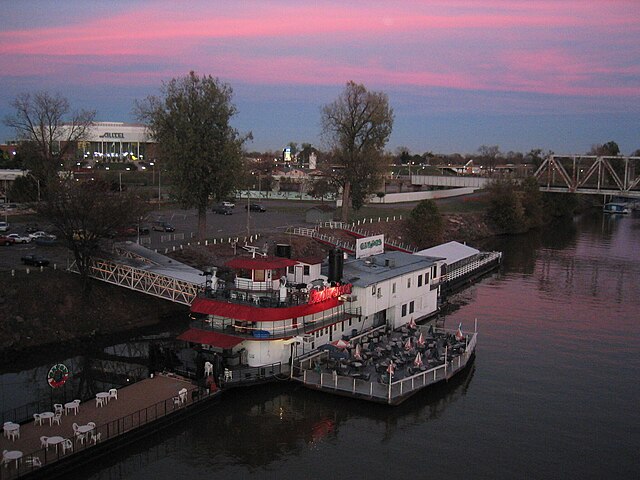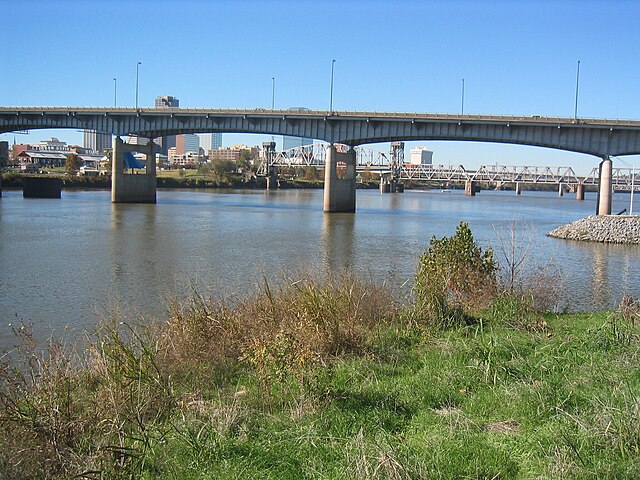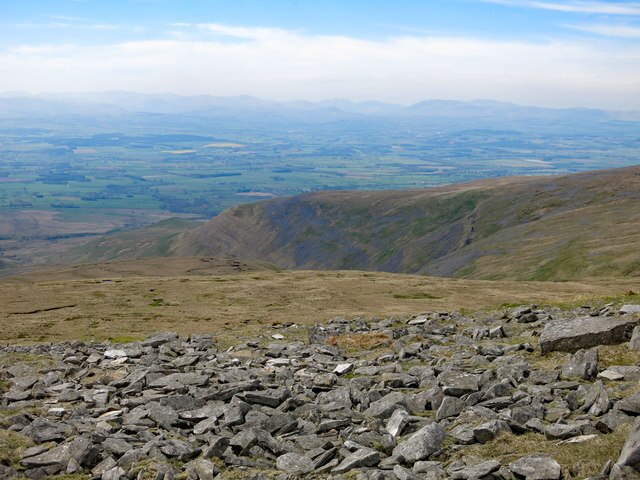Understanding North Little Rock’s Climate Patterns
When you’re living in or visiting North Little Rock, Arkansas, understanding the local weather patterns becomes essential for daily planning. The city experiences a humid subtropical climate that brings distinct seasonal variations, making it crucial to stay informed about current conditions and upcoming forecasts.
North Little Rock’s weather is influenced by its location in central Arkansas, where warm, humid air masses from the Gulf of Mexico collide with cooler, drier air from the north. This unique geographical position creates dynamic weather patterns that can change rapidly throughout the day.
The Arkansas River runs through the heart of North Little Rock, adding another layer of complexity to local weather conditions. The river creates microclimates that can affect temperature and humidity levels, particularly during summer months when the water body helps moderate extreme temperatures.
Seasonal Weather Breakdown

Understanding the four distinct seasons in North Little Rock helps residents and visitors prepare for what’s ahead. Each season brings its own characteristics, challenges, and opportunities for outdoor activities.
Spring Weather in North Little Rock (March-May)
Spring arrives gradually in North Little Rock, typically beginning in mid-March when temperatures start climbing from winter lows. This season is characterized by mild temperatures, increasing rainfall, and the occasional severe thunderstorm.
March temperatures usually range from lows in the mid-40s to highs in the upper 60s Fahrenheit. You’ll notice longer daylight hours and the gradual awakening of local vegetation. However, don’t pack away your winter clothes just yet – late-season cold snaps can still occur.
April brings more consistent warmth, with temperatures ranging from the mid-50s to mid-70s. This is when North Little Rock truly comes alive with blooming flowers and green landscapes. Rain becomes more frequent, often arriving in the form of afternoon and evening thunderstorms.
May serves as a transition into summer, with temperatures climbing into the 60s and 80s. Humidity levels begin to rise, and severe weather becomes more common. This is prime tornado season for Arkansas, so staying weather-aware becomes particularly important.
Summer Climate Conditions (June-August)
Summer in North Little Rock means hot, humid conditions that can be challenging for outdoor activities. The season is characterized by high temperatures, frequent afternoon thunderstorms, and muggy conditions that make the heat feel even more intense.
June temperatures typically range from the low 70s to upper 80s, with humidity levels that can make it feel much hotter. Afternoon thunderstorms become a regular feature, often providing brief relief from the heat but also contributing to the overall humidity.
July and August represent the peak of summer heat, with temperatures often reaching into the 90s and heat indices climbing over 100 degrees Fahrenheit. These months require careful planning for outdoor activities, with early morning or evening hours being the most comfortable times to be outside.
The combination of heat and humidity during summer months makes staying hydrated and seeking air-conditioned environments crucial for health and comfort. Sudden thunderstorms can provide temporary relief but may also bring dangerous lightning and heavy rainfall.
Fall Weather Patterns (September-November)
Fall brings welcome relief from summer’s heat, with gradually cooling temperatures and lower humidity levels. This season is often considered the most pleasant time of year in North Little Rock, offering ideal conditions for outdoor activities and events.
September still retains some summer characteristics, with temperatures in the 70s and 80s, but humidity levels begin to drop noticeably. The first hints of autumn color start appearing in late September, creating beautiful landscapes throughout the city.
October delivers classic fall weather, with comfortable temperatures ranging from the 50s to 70s. This is prime time for outdoor festivals, hiking, and other activities. Rainfall decreases compared to summer months, and severe weather becomes less common.
November marks the transition toward winter, with temperatures dropping into the 40s and 60s range. The last of the fall foliage creates stunning displays before trees enter their dormant winter phase. First frost typically occurs in mid to late November.
Winter Weather Overview (December-February)
Winter in North Little Rock is generally mild compared to northern regions, but the season still brings its own challenges and characteristics. Temperatures are cool but rarely extremely cold, and precipitation can include both rain and occasional snow or ice.
December temperatures typically range from the 30s to 50s, with shorter daylight hours and increased chances of precipitation. While snow is possible, it’s not common, and when it does occur, it usually melts quickly.
January represents the coldest month, with temperatures often dipping into the 20s and 30s at night and reaching the 40s and 50s during the day. Ice storms can be a significant concern during winter months, potentially causing power outages and hazardous driving conditions.
February begins the gradual transition back toward spring, with slightly warmer temperatures and longer days. However, late-season winter storms can still occur, so maintaining weather awareness remains important throughout the season.
Current Weather Conditions and Forecasting

Staying current with North Little Rock weather conditions requires reliable sources and understanding how to interpret forecast information. Modern technology provides numerous options for accessing accurate, up-to-date weather data.
Best Weather Apps and Resources for North Little Rock
The National Weather Service office in North Little Rock provides the most authoritative weather information for the area. Their website and mobile app offer detailed forecasts, warnings, and radar imagery specific to central Arkansas.
Popular weather apps like Weather Underground, AccuWeather, and The Weather Channel provide user-friendly interfaces with hourly and extended forecasts. These apps often include features like precipitation probability, wind conditions, and air quality indices.
Local television meteorologists offer valuable insights into North Little Rock weather patterns, often providing context that automated forecasts might miss. Many local stations maintain active social media presence, sharing real-time updates during severe weather events.
Weather radar apps become particularly valuable during severe weather season, allowing users to track approaching storms and make informed decisions about outdoor activities or travel plans.
How to Read Local Weather Patterns
Understanding weather patterns specific to North Little Rock helps you anticipate changes before they occur. The city’s location creates predictable patterns that experienced residents learn to recognize.
Morning fog is common during cooler months, particularly when warm, humid air moves over cooler surfaces. This fog typically dissipates as temperatures rise, but it can significantly impact morning commute conditions.
Afternoon thunderstorms during summer months often develop along predictable patterns, typically forming to the west and moving eastward. These storms can intensify quickly, bringing heavy rain, lightning, and occasionally hail.
Wind direction provides clues about upcoming weather changes. Southerly winds often bring warmer, more humid conditions, while northerly winds typically herald cooler, drier air masses.
Extreme Weather Events in North Little Rock
Living in North Little Rock means being prepared for occasional severe weather events that can impact daily life and safety. Understanding these risks and knowing how to respond helps ensure personal safety and property protection.
Tornado Season and Severe Storm Preparation
Tornado season in Arkansas typically runs from March through June, with peak activity occurring in April and May. North Little Rock’s location in “Tornado Alley” makes severe weather preparedness essential for all residents.
The city has experienced significant tornado events throughout its history, including the devastating April 27, 2014 tornado that caused extensive damage and highlighted the importance of having emergency plans in place.
Severe thunderstorms can produce damaging winds, large hail, and dangerous lightning. These storms often develop rapidly during late afternoon and evening hours when atmospheric instability peaks.
Having multiple ways to receive weather warnings is crucial. Weather radios, smartphone apps, and local emergency alert systems provide redundant warning methods to ensure you’re notified of approaching severe weather.
Creating and practicing an emergency plan with family members ensures everyone knows where to go and what to do when severe weather threatens. Identifying interior rooms on the lowest floor, away from windows, provides the safest shelter during tornado warnings.
Flooding Risks and Weather Warnings
Heavy rainfall events can cause flash flooding in North Little Rock, particularly in low-lying areas and near drainage systems. The Arkansas River and local creeks can rise rapidly during intense precipitation events.
Urban flooding becomes a concern when storm drainage systems become overwhelmed by heavy rainfall rates. Areas with poor drainage or construction in floodplains face elevated risks during significant rain events.
The National Weather Service issues flood warnings and watches when conditions favor flooding development. Understanding the difference between watches (conditions favorable) and warnings (flooding imminent or occurring) helps guide appropriate responses.
Never attempt to drive through flooded roadways, as just a few inches of moving water can sweep vehicles away. The phrase “Turn Around, Don’t Drown” serves as an important reminder during flood conditions.
Historical Weather Data and Climate Trends
Examining historical weather patterns provides valuable context for understanding North Little Rock’s climate and helps identify long-term trends that may affect future conditions.
Average Temperature Records by Month
North Little Rock’s temperature records reveal consistent seasonal patterns with some notable variations from year to year. January typically represents the coldest month, with average highs around 50°F and lows near 30°F.
July and August compete for the title of hottest months, with average highs reaching into the low 90s and overnight lows in the low 70s. However, heat indices during these months often exceed actual temperatures due to high humidity levels.
Spring and fall serve as transition seasons, with March and November showing the most variable temperatures as weather patterns shift between seasonal extremes. These months can experience significant day-to-day temperature swings.
Record-breaking temperatures occur occasionally, with the highest recorded temperature reaching 110°F and the lowest dropping to -12°F. These extreme events remind residents of the importance of weather preparedness year-round.
Precipitation Patterns and Rainfall Data
North Little Rock receives approximately 50 inches of precipitation annually, with the wettest months typically occurring during spring and early summer. Rainfall distribution throughout the year shows distinct seasonal patterns.
Spring months often experience the highest rainfall totals, with frequent thunderstorm activity contributing to monthly totals that can exceed 5 inches. This precipitation supports the lush vegetation growth characteristic of Arkansas springs.
Summer rainfall comes primarily from afternoon and evening thunderstorms that can produce intense rainfall rates over short periods. While monthly totals may be moderate, individual storms can produce several inches in just a few hours.
Fall and winter months generally receive less precipitation, though periodic weather systems can still bring significant rainfall or occasional snow. Drought conditions sometimes develop during extended periods of below-normal precipitation.
Planning Activities Around North Little Rock Weather
Successful activity planning in North Little Rock requires understanding seasonal weather patterns and staying flexible to accommodate changing conditions. Different seasons offer unique opportunities and challenges for outdoor events.
Best Times for Outdoor Activities
Fall months, particularly October and November, provide ideal conditions for most outdoor activities. Comfortable temperatures, low humidity, and minimal precipitation make this season perfect for hiking, festivals, and sports events.
Spring offers another excellent window for outdoor activities, though weather can be more unpredictable. April and May provide pleasant temperatures but require flexibility due to potential thunderstorm activity.
Early summer mornings and late evenings offer the most comfortable conditions during the hottest months. Planning activities for these times helps avoid the peak heat and humidity of midday hours.
Winter activities can be enjoyable during mild periods, but require monitoring weather forecasts for potential cold snaps or precipitation that might create hazardous conditions.
Weather-Dependent Event Planning
Outdoor event planning in North Little Rock requires careful consideration of seasonal weather patterns and backup plans for adverse conditions. Spring and fall offer the most reliable weather windows for outdoor events.
Summer events need heat management strategies, including shade, cooling stations, and hydration reminders for participants. Indoor backup venues become essential for events that cannot be postponed.
Severe weather season demands flexible planning with clear communication strategies for weather-related cancellations or postponements. Event organizers should monitor weather forecasts closely during spring months.
Winter events must account for potential ice or snow that could create hazardous travel conditions. Having contingency plans helps ensure participant safety during unexpected weather changes.
How Climate Change Affects Local Weather

Climate change impacts are becoming increasingly visible in North Little Rock’s weather patterns, with trends toward more extreme events and shifting seasonal characteristics affecting local planning and preparation needs.
Future Weather Predictions and Trends
Climate scientists predict North Little Rock will experience warmer average temperatures in coming decades, with particular increases in overnight low temperatures. This warming trend may extend growing seasons and alter precipitation patterns.
Extreme heat events are expected to become more frequent and intense, requiring enhanced cooling strategies for vulnerable populations. Heat island effects in urban areas may amplify these temperature increases.
Precipitation patterns may shift toward more intense rainfall events separated by longer dry periods. This change could increase both flood risks during heavy rain and drought concerns during extended dry spells.
Severe weather patterns may intensify, with stronger storms and potentially expanded tornado season periods. These changes emphasize the continued importance of weather preparedness and emergency planning.
Conclusion
Understanding North Little Rock’s weather patterns empowers residents and visitors to make informed decisions about daily activities, emergency preparedness, and long-term planning. The city’s humid subtropical climate creates distinct seasonal characteristics that range from mild winters to hot, humid summers, with beautiful spring and fall transition periods.
Staying informed through reliable weather sources, understanding local climate patterns, and preparing for severe weather events ensures safety and comfort throughout the year. Whether you’re planning outdoor activities, preparing for severe weather season, or simply deciding what to wear, knowledge of North Little Rock’s weather patterns serves as your guide.
As climate patterns continue evolving, maintaining awareness of changing trends and adapting preparation strategies becomes increasingly important. By staying weather-aware and prepared, you can safely enjoy all that North Little Rock has to offer, regardless of what Mother Nature brings your way.
Frequently Asked Questions
What is the best time of year to visit North Little Rock weather-wise?
Fall (October-November) and spring (April-May) offer the most pleasant weather conditions in North Little Rock. These seasons feature comfortable temperatures, lower humidity, and minimal severe weather risks, making them ideal for outdoor activities and sightseeing.
How often does North Little Rock experience tornadoes?
While North Little Rock is located in a tornado-prone region, actual tornado occurrences within the city limits are relatively rare. However, the threat is real during spring months (March-June), and residents should always be prepared with emergency plans and multiple ways to receive weather warnings.
Does North Little Rock get snow during winter?
North Little Rock typically receives minimal snowfall, averaging 2-4 inches annually. Snow events are usually light and brief, with accumulation rarely lasting more than a day or two. Ice storms pose a greater winter weather concern than heavy snow.
What’s the hottest month in North Little Rock?
July and August are typically the hottest months, with average high temperatures in the low 90s°F. However, high humidity levels can make it feel much hotter, with heat indices often exceeding 100°F during peak summer periods.
How can I stay updated on severe weather in North Little Rock?
The best approach is using multiple information sources: National Weather Service alerts, local TV meteorologists, weather apps with push notifications, and NOAA Weather Radio. Having redundant warning methods ensures you’ll receive critical weather information even if one system fails.

